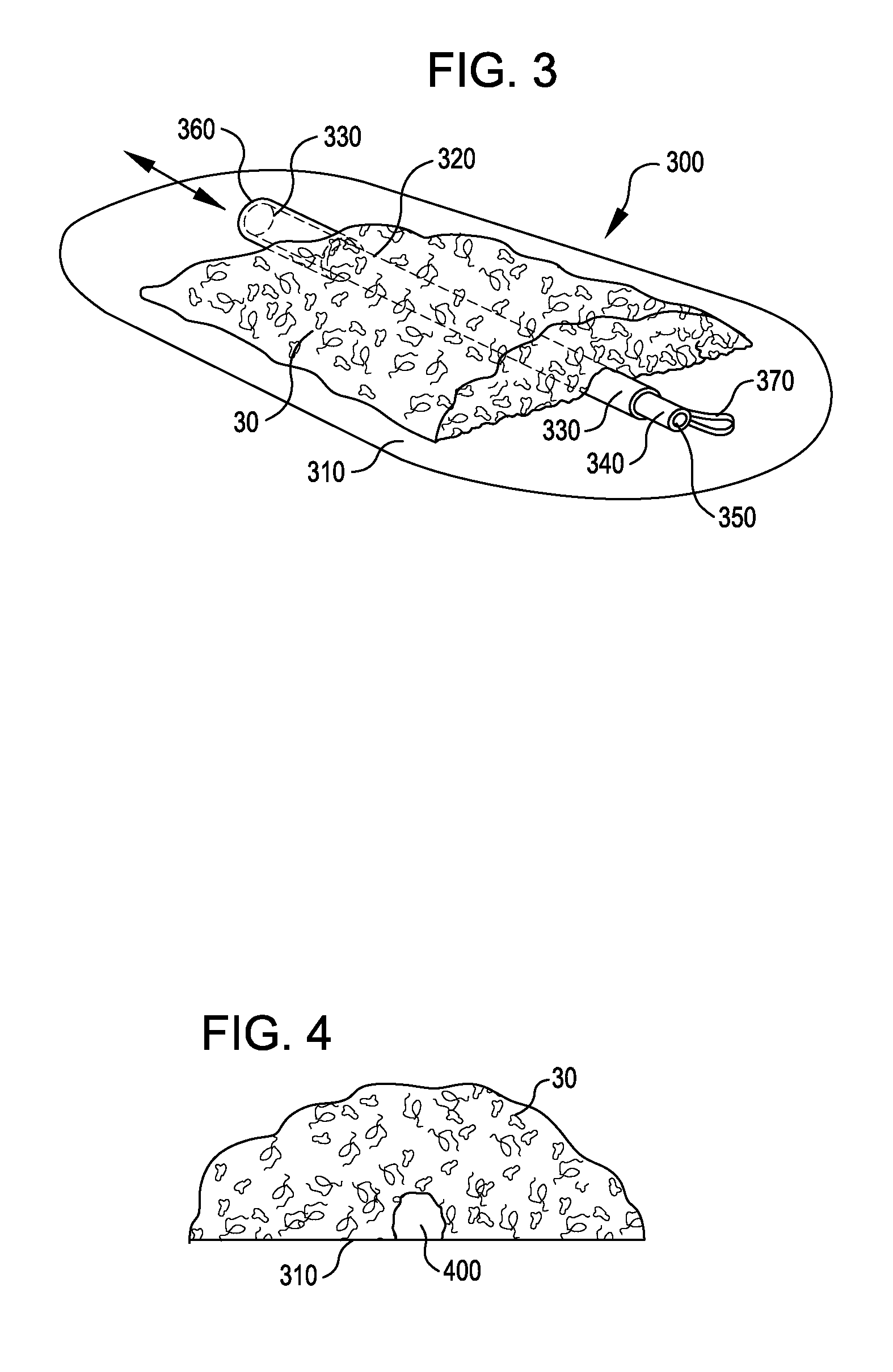Systems and Methods for Generating Compost
a technology of compost and generation system, applied in the field of aerated compost generation system, can solve the problems of odorous and/or corrosive gases released from the surface of the compost pile, system that employs negative aeration usually has operational problems, and is associated with significant compost odor emissions, so as to achieve the effect of substantially eliminating the production of compost odors
- Summary
- Abstract
- Description
- Claims
- Application Information
AI Technical Summary
Benefits of technology
Problems solved by technology
Method used
Image
Examples
Embodiment Construction
[0027] Systems and methods for generating compost that employ aeration to aerobically degrade and stabilize organic wastes are provided. The composting systems disclosed herein are capable of effectively controlling compost odors, maintaining desired oxygen levels in the biomass, and minimizing evaporative drying of the biomass.
[0028] In the embodiment shown in FIG. 1, the composting system 100 comprises at least one aerated composting zone 5. Composting system 100 is provided with a compost cover 10 and an aeration floor 50. Compost biomass 30 for use in generating compost is placed on aeration floor 50, and compost cover 10 is placed over and substantially covers biomass 30. The edges of compost cover 10 may be weighted and / or may be provided with straps that connect to fastening points in aeration floor 50. Compost cover 10 is further held in place by way of suction generated from aeration floor 50. A central aeration and control system (not illustrated) controls the air flow, t...
PUM
| Property | Measurement | Unit |
|---|---|---|
| length | aaaaa | aaaaa |
| diameter | aaaaa | aaaaa |
| diameter | aaaaa | aaaaa |
Abstract
Description
Claims
Application Information
 Login to View More
Login to View More - R&D
- Intellectual Property
- Life Sciences
- Materials
- Tech Scout
- Unparalleled Data Quality
- Higher Quality Content
- 60% Fewer Hallucinations
Browse by: Latest US Patents, China's latest patents, Technical Efficacy Thesaurus, Application Domain, Technology Topic, Popular Technical Reports.
© 2025 PatSnap. All rights reserved.Legal|Privacy policy|Modern Slavery Act Transparency Statement|Sitemap|About US| Contact US: help@patsnap.com



